
In recent years, India’s healthcare landscape has been under intense scrutiny, primarily due to the escalating costs associated with medical treatment. With medical inflation hovering around 14%, the financial burden of healthcare is becoming increasingly unsustainable for a significant portion of the population. This article aims to dissect the various facets of India’s healthcare system, examining the impact of rising costs and the challenges they pose to the nation’s health and economic stability.
The Escalating Cost of Healthcare
One of the most alarming trends in India’s healthcare sector is the rapid rate of medical inflation. Currently estimated at 14%, this rate far outpaces general inflation, leading to a scenario where the cost of treatment nearly doubles every five years. For instance, a health insurance cover of INR 10 lakh today will effectively be worth only about INR 5 lakh in five years, given the current rate of medical inflation. This rapid devaluation of insurance coverage underscores the need for more robust healthcare financing models.
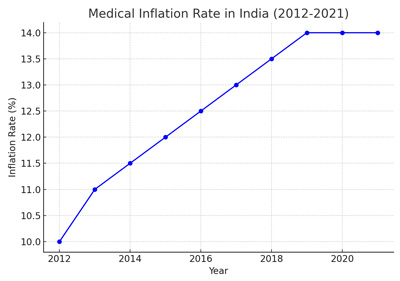
Out-of-Pocket Expenditure and Its Implications
A striking aspect of India’s healthcare system is the reliance on out-of-pocket expenses for medical treatment. Reports indicate that 63% of hospitalization bills are paid directly by patients, rather than through insurance or government assistance. This high out-of-pocket expenditure is not only financially draining for families but also has broader socio-economic ramifications. Approximately 7% of India’s population is pushed into poverty annually due to healthcare costs, highlighting the urgent need for more affordable healthcare solutions and better insurance coverage.
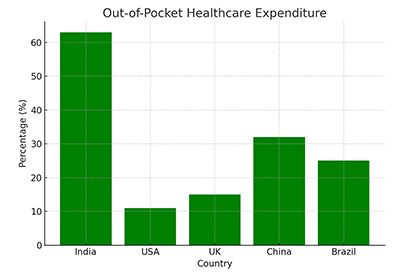
The High Cost of Treating Chronic Diseases
Chronic diseases like heart disease, kidney disease, and cancer add to the financial strain. Heart diseases, requiring surgeries such as angioplasty, can cost anywhere from INR 1.5 to 4.5 lakhs. Kidney diseases, especially those necessitating dialysis or transplantation, can incur an average annual expense of around INR 2-3 lakhs, can deplete a family’s finance rapidly. Cancer treatments, involving procedures like chemotherapy, radiation or surgery can escalate to up to INR 20 lakhs for certain types, posing a significant economic and devastating challenge for many families, .
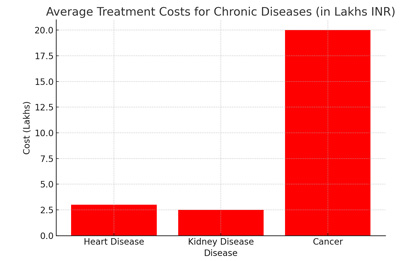
Insurance Coverage and Its Limitations
Despite the critical role of health insurance in mitigating healthcare costs, only about 35% of India’s population was covered under any health insurance policy as of 2021. While health insurance can provide some respite from high medical costs, the coverage is often inadequate in the face of escalating treatment expenses. Many health insurance policies have caps and limits that don’t align with the actual cost of treating serious illnesses. Additionally, the prevalence of low insurance penetration in India means that a significant portion of the population is vulnerable to financial hardship in the event of a medical emergency.
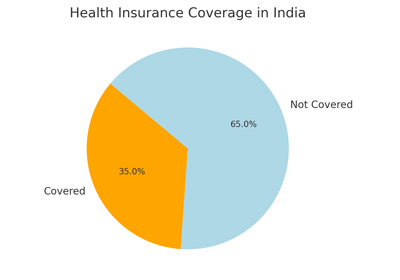
Government Initiatives and Policy Response
In response to these challenges, the Indian government has introduced initiatives like Ayushman Bharat, launched in 2018. This scheme aims to provide health insurance coverage of up to INR 5 lakhs per family per year, potentially benefiting over 500 million people. However, the success of such initiatives hinges on effective implementation, sufficient coverage, and accessibility to the intended beneficiaries.
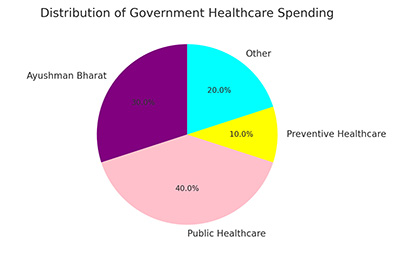
The Need for Holistic Healthcare Reform
India’s public spending on healthcare is approximately 1.29% of its GDP as of the financial year 2021-22. To address the systemic issues, a comprehensive approach is necessary. This includes enhancing public healthcare infrastructure, increasing health insurance penetration, and implementing effective price controls on medical treatments and drugs. Additionally, there is a need to focus on preventive healthcare to reduce the incidence of chronic diseases, which can have a significant impact on reducing long-term healthcare costs.
Private Sector’s Role and Public-Private Partnerships
The private sector, accounting for almost 74% of India’s total healthcare expenditure, plays a pivotal role. Public-private partnerships (PPPs) have been increasingly recognized as a viable solution for enhancing healthcare delivery, particularly in underserved areas. These partnerships can facilitate better resource utilization and improve access to quality healthcare services.
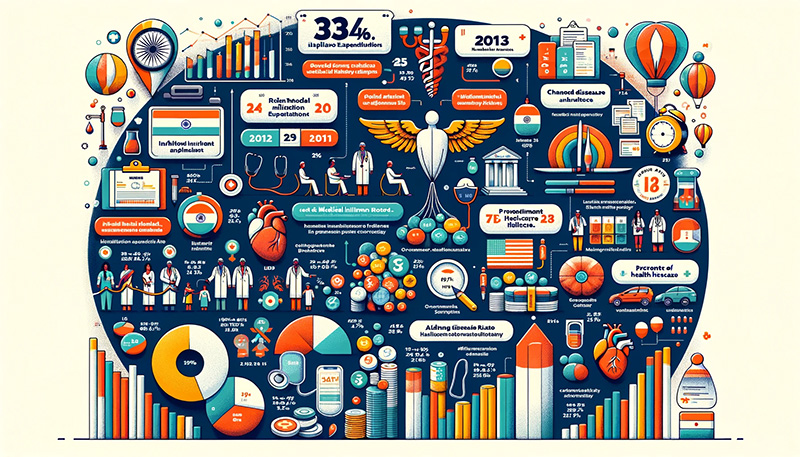
Summary
India’s healthcare scenario presents a complex mix of challenges and opportunities. While the rising cost of healthcare poses significant challenges, it also highlights the need for systemic reforms and innovative solutions. A concerted effort from the government, private sector, and civil society is essential to create a more inclusive, affordable, and effective healthcare system. Addressing these issues is not just a matter of health policy but a crucial step towards ensuring economic stability and social equity in India. The road ahead is challenging, but with the right policies and actions, India can pave the way for a healthier and more prosperous future.
Prof. Dr. Prahlada N. B
9 December 2023
Chitradurga.

















Leave a reply